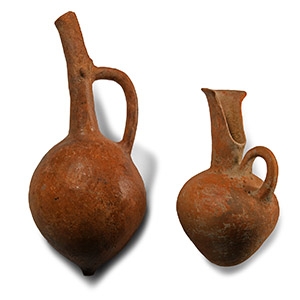Home > Auctions > 5 - 9 March 2024: Ancient Art, Antiquities,
Natural History & Coins
Auction Highlights:
Collected between the 1950s-1990s.
Ex Roger Liechti (1934-2010) collection, Geneva, Switzerland.
This lot has been checked against the Interpol Database of stolen works of art and is accompanied by search certificate no.12133-211848.
Cf. Davies, S., and Smith, H.S., The Sacred Animal Necropolis at North Saqqara. The Falcon Complex and Catacomb: The Archaeological Report, London, 2005, p.24 (no.FCO-478), pl.LXVIa, for a close parallel from one of the subterranean falcon mummy galleries at Saqqara.
This box almost certainly once contained the mummified remains of a falcon. The falcon was principally identified with the sun-god Horus, and associated with the living king. Numerous falcon cults existed throughout Egypt, but the most spectacular was found at Saqqara, where many thousands of birds were mummified and buried in an extensive complex of underground galleries.
Ex Dr Daniel Marie Fouquet (1859-1914), Cairo.
with Pierre Berge & Associes, Auction, Archaeology 29 November 2014, no.193.
Accompanied by a French cultural export permit, no.161028.
Accompanied by an academic report by Dr Raffaele D'Amato.
Accompanied by a copy of the relevant pages in: Perdrizet, P., Les Terres Cuites Grecques d'Egypt de la Collection Fouquet, Nancy, 1921, where it is published.
This lot has been checked against the Interpol Database of stolen works of art and is accompanied by search certificate no.12000-211884.
See Higgings, R.A., Greek Terracottas, London, 1967, for the study of the various Erote subjects; Chesterman, J., Classical Terracotta Figures, New York, 1975, pp.76-78, for a general approach to style and production of Roman terracotta; for the characteristics and interpretation of the figure of Eros in Roman Age see Mattei, M., La favola di Amore e Psiche, Roma, 2012.
Perdrizet, P., Les Terres Cuites Grecques d'Egypt de la Collection Fouquet, Nancy, 1921, Bd 1, 96, Nr. 245, Bd. 2, Tafel LII.
The image of the ‘Eros Baker’ is part of a wide production of Roman terracotta imitating Greek models, although in somewhat crude way. In the Roman age, designs tended to be commonplace and were often indifferent copies of Greek originals. However, the production of terracotta in Hellenistic Egypt continued without interruption and the most subjects of these votive statuettes (in this case probably a baker invoking the blessing of the god upon his activity) were religious, Eros being one of the favourites.
Ex Jean-Paul Bourgis collection, Beaulieu-sur-Mer, France, 1980.
This lot has been checked against the Interpol Database of stolen works of art and is accompanied by search certificate no.12128-213629.
Cf. Bothmer, B. V., Egyptian Sculpture of the Late Period, 700 B.C. to A.D. 100, New York, 1960, pls.45, no.111, and 55, no.136.
Japanese collection, prior to 1980.
AAL Geneva, Switzerland, 1980.
British collection since 1999.
with Pierre Bergé & Associés, Paris, 2 February 2017, no.78 (20,000-22,000 Euros).
Accompanied by copies of the relevant Pierre Bergé & Associés catalogue pages.
This lot has been checked against the Interpol Database of stolen works of art and is accompanied by search certificate no.12132-213615.
Cf. The British Museum, museum number EA60339, for a similar figure believed to possibly date to the Late Period; Musée du Louvre, inv.no. AF 588.
The statuette was most likely an offering made at one of Montu’s cult centres in the Theban region to ensure for the dedicator the good favour of the god. Commensurate with his warlike nature, Montu can sometimes be depicted holding a khepesh sickle-bladed sword, yet here he holds a rarer attribute: a carefully detailed staff with a falcon-headed terminal emerging from a papyrus umbel. This almost certainly symbolises Montu’s association with Re – the Heliopolitan sun-god also depicted with a falcon head - as his Upper Egyptian counterpart.
From an early 20th century collection, based on the alabaster stand.
Probably the Hilton Price collection, based on the style of the base.
This lot has been checked against the Interpol Database of stolen works of art and is accompanied by search certificate no.12131-213614.
Cf. Daressy, G., Catalogue général des antiquités égyptiennes du Musée du Caire N° 38001-39384 Statues de divinités, Cairo, 1906, pl.XLVIII (inv. no. 38953), for similar figure.
Neith was the patron goddess of the powerful city of Sais in the Nile Delta.
From the vendor's grandfather's collection, formed in the 1950s; thence by family descent circa 1974.
See Sowada, K.S., Black-Topped Ware in Early Dynastic Contexts, in Journal of Egyptian Archaeology, vol.85, 1999; Adams, B., Predynastic Egypt, Shire Egyptology 7, Princes Risborough, 1988; Petrie, W.M.F., Naqada and Ballas, London, 1895; Petrie, W.M.F., Corpus of Prehistoric Pottery and Palettes, London, 1921; Wodzinska, A., A Manual of Egyptian Pottery. Volume 1: Fayum A – Lower Egyptian Culture, Boston, 2010.
The 'black-topped' ware was the most common funerary pottery during Naqada I and Naqada II periods, with a small volume of production in the Naqada III, Early Dynastic and Old Kingdom periods.
Ex collection of Madame Kismet Pilati, acquired in Vienna and London in 1976.
with Bonhams, London, 24th October 2012, no.284 (£30,000-£50,000).
Property of a London lady, part of her family's Swiss collection.
Accompanied by an academic report by Egyptologist Paul Whelan.
Accompanied by copies of the relevant Bonhams catalogue pages.
This lot has been checked against the Interpol Database of stolen works of art and is accompanied by search certificate no.12101-213115.
Cf. Patch, D.C., Dawn of Egyptian Art, New Haven/London, 2011, pp.30-31, Cat. nos.17-18, for discussion and similar examples; the modelling of the frog on this vessel, with the definition of the limbs achieved in raised relief rather than being individually modelled, is closer to an example in the Brooklyn Museum no.37.648E, and Penn Museum no.E9665.
Ex Mayfair gallery collection, London, UK, pre 1999.
Cf. similar vessel in diorite in Metropolitan Museum of Art, accession no.12.181.97.
Acquired from Gallery Gryphos, Munich, 2000s.
European private collection.
Cf. Biers, W.R., The archaeology of Greece: an introduction, Ithaca-London, 1987, p.84, for identical piriform jar.
Deposits from Mycenae, Korakou and Nichoria are relatively rich in painted jugs, small stirrup and piriform jars. The pattern usually employed on piriform jars preserves a rim decoration of short strokes, neck being solidly painted. Following an usual syntax, a line group appears on the upper shoulder below the neck. Bases are solidly painted, except for an occasional thin reserved area on the lower base edge.
British private collection, acquired by 2000.
From a collection acquired on the UK art market from various auction houses and collections mostly before 2000.
From an important Cambridgeshire estate; thence by descent.
See Comstock, M., Vermeule C., Greek, Etruscan & Roman Bronzes in the Museum of Fine Arts Boston, New York, 1971, p.4, no.1, for similar.
In the Dictean Cave in Greece, many votive statuettes of this type were found. The flounced skirt is characteristic of Minoan women's dress, and it was lavishly decorated in folds of different colours. It could be worn with or without a narrow corselet, but in both cases exposing the breast. The exposed breast was connected to the cult of the mother goddess, and fertility, an element here reinforced by the presence of the suckling child.
Gifted to the previous owner's husband by his grandfather prior to 1919 while in Crete.
Taken to Paris and brought to the UK before 1985.
Acquired from Bonhams, London, 20 October 2005, no.124.
From an important Cambridgeshire estate; thence by descent.
Accompanied by copies of the relevant Bonhams catalogue pages.
Cf. D'Amato, R., Salimbeti, A., Early Aegean Warrior 5000-1450 BC, Oxford, 2013, fig. p.37, for similar.
The double axe was both a tool, weapon and one of the main religious symbol in Minoan Crete. It was as significant and as important in Minoan religious practice as the ritual horn and the pillar.
with Christie's, London, 11 December 1974.
Formerly from the collection of Lord Dayton of Corran, formed between 1960-2000.
Acquired from Bonham's, New Bond Street, 27 April 2006, lot 313 (part).
The smaller vessel is from a collection acquired on the UK art market from various auction houses and collections mostly before 2000.
From an important Cambridgeshire estate; thence by descent.
Accompanied by a copy of the relevant Bonhams catalogue pages.
Cf. Morris, D., The Art of ancient Cyprus, Oxford, 1985, fig. p.18, pl.9, for similar.
The plain red polished ware was dominant in Cyprus in the early Bronze Age. It included jugs with nipple base, cutaway sprout, and paired, blunt projections near handle attachment points.
13 - 24 of 2726 LOTS

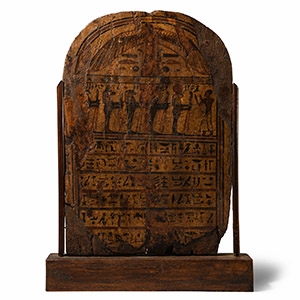
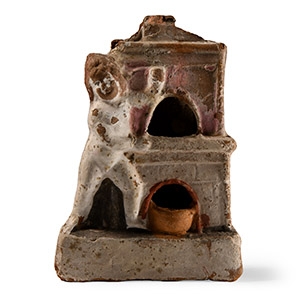

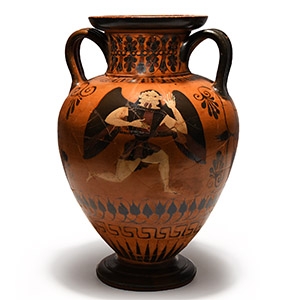
.jpg)
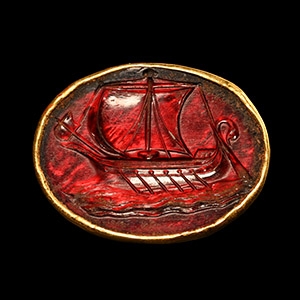
.jpg)

.jpg)
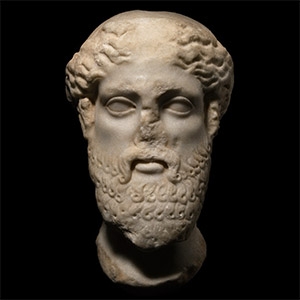
.jpg)
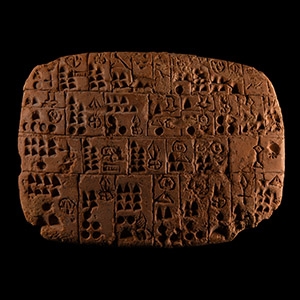

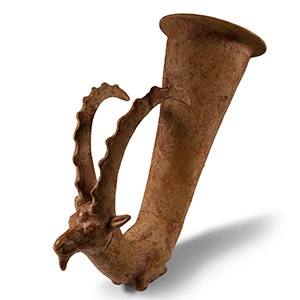
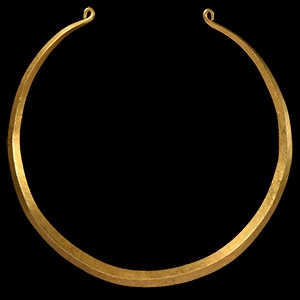
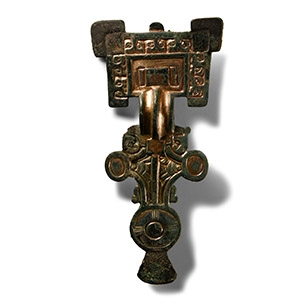
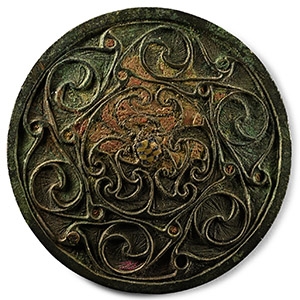

.jpg)
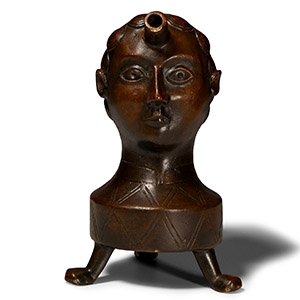
.jpg)

.jpg)
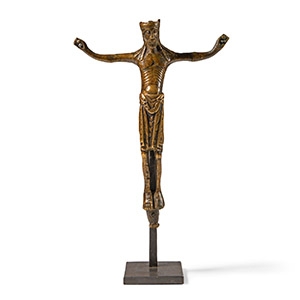


.jpg)
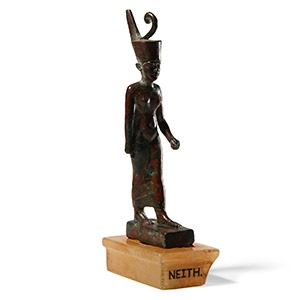
.jpg)

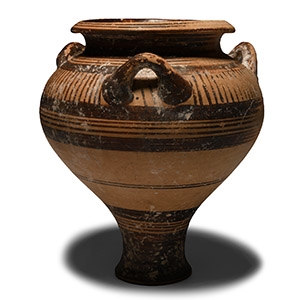
.jpg)
.jpg)
